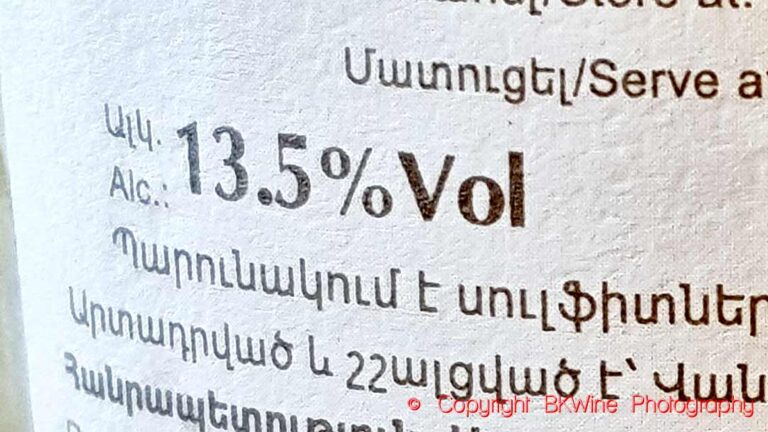
A long time ago, when I started doing wine tastings for groups, I noticed some strange perceptions among the participants about certain things. One was that white wines are not as serious as red, so it is no use organising wine tastings with white wines. I soon managed to get rid of that one. But other things were more long-lived. For example, single-grape wines are more high-quality than wines where several different grapes have been blended.
Where did this come from? Bordeaux must somehow have been forgotten in the context or counted as the exception that proved the rule. Was it because the wines of southern France, such as Languedoc-Roussillon and the Southern Rhône Valley, use many different grape varieties?
Bordeaux can use six red varieties in their wines, but they can also, if they want, use just one. It is allowed. But in many French appellations, you are not allowed to make single-grape wines; you must blend. No grape variety is considered good enough to go it alone, although many wines prove the opposite. Today anyway. Maybe it was different in the old days.
It is logical in many ways to have several different grape varieties in your vineyard. It can counteract the whims of nature and maybe save part of the harvest. If one variety suffers from problems one year, you have others that may have done better.
Different grape varieties give different characteristics to the wine. Ask a Médoc producer if 2% of petit verdot can make a difference, and the answer will be yes, petit verdot contributes a bit of spiciness, acidity, and colour. Another grape variety can add something else the wine producer thinks is essential.
Acidity is vital for all wines and even more so for some. I just returned from our wine tour in Sancerre (and the rest of the Loire), where we tasted vintages 2021 and 2022. 2021 was a cool year with the typical sauvignon blanc acidity, and 2022, on the other hand, was hot and dry with a very different style and noticeably lower acidity.
One of the producers we visited said they might need to start looking for alternative grapes for sauvignon blanc. Or do as some growers do, blend early-harvested and barely ripe grapes with well-ripened grapes harvested later to get a better balance in the wine.
The wine world does not use more than a tiny part of the many different grape varieties that exist in the world. But voices are being raised for more diversity in the vineyard, also in terms of grapes. We will surely see more and more different grapes in the vineyards. Be prepared; there will be many new names to learn. Sometimes as one element in a blend but, in the longer run, perhaps even as single-variety wines.
I actually drank my first French souvignier gris in Chinon this week. It is an excellent fungus-resistant hybrid that reduces the need for spraying. It is allowed in the IGP Val de Loire, although not in the AOP Chinon.
Nobody today believes that blended wines are inferior to single-grape wines. The quality of the wine does not depend on whether it is made from one or more grapes but on the quality of the grapes and the winemaker’s talent. Be it red or white.
Another common misconception that we actually still encounter is that grapes that are used to make wine are not good to eat. It must have been in some old book a long time ago and seems to still live on. Join us on a wine tour during harvest time, and you will discover that grapes used to make wine are both sweeter and tastier than table grapes. But more on that myth another time.
And now, on to our wine tours:
Wine travel in harvest time
You can already start planning for wine tours next harvest season:
- Champagne, September 27 – October 1
- Champagne and Bordeaux, September 27 – October 5
- Bordeaux, October 1-5
Travel in winter (but summer)
Some of our most exceptional wine tours are during the winter. They are filled with very special experiences. In summer weather in the southern hemisphere!
You have three fantastic long-distance tours to choose from:
- Chile-Argentina in January 2024
- South Africa in February 2024
- New Zealand in March 2024
These are tours with unique and magnificent experiences.
More info on our wine tours here. “World’s Top Wine Tours“. Tours with the people who know wine and who have an unrivalled experience of wine and tours.
Travel in wine regions with someone you trust.
Enjoy the Brief!
Britt & Per
If you appreciate what we do, you can help us: Tell your friends about the Brief or send it to them.
Like us and follow us on social media:
BKWine Magazine on Facebook | Wine Tours on Facebook
Twitter | Instagram | Linkedin | YouTube
This is just the introduction to the latest issue of the Brief. Subscribe to the BKWine Brief and you will get the whole edition in your mailbox next month.
What’s on at BKWine Tours
BKWine is also one of the world’s leading wine tour operators. Here’s what we currently have on our scheduled wine tour program:
- Champagne, September 27 – October 1
- Bordeaux and Champagne, Sept 27 – Oct 5
- Bordeaux, October 1-5
–
- Chile-Argentina, 15-28 January 2024
- South Africa, 8-18 February 2024
- New Zealand, 12-27 March 2024
We also make custom designed wine tours.
We’re different than most other wine tour operators. We are people who know wine inside out, who travel constantly in wine regions, who write award winning books about wine. Who do this out of passion. Our tours are different from others. More in wine tours: BKWineTours.com.











